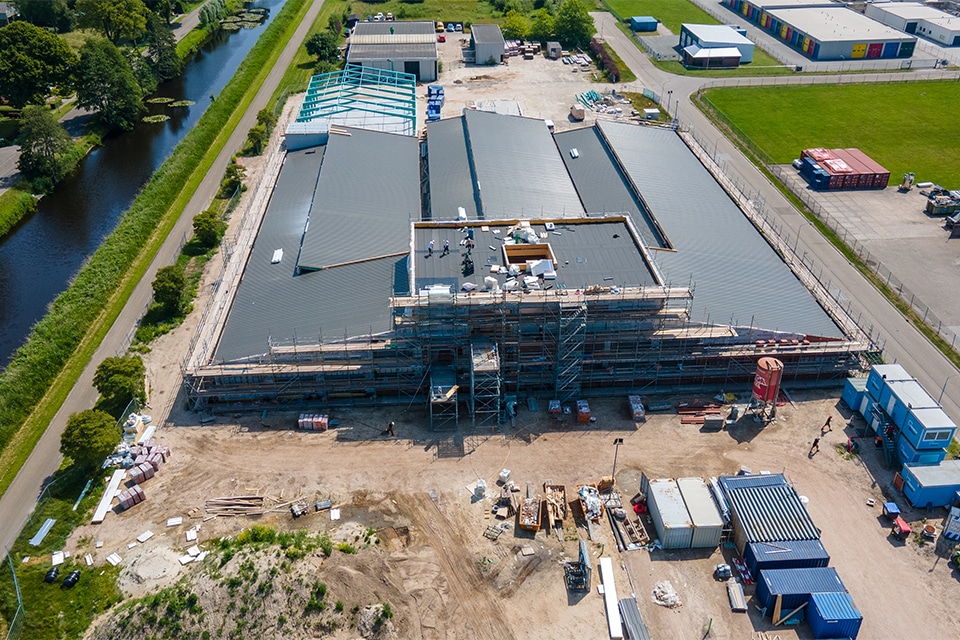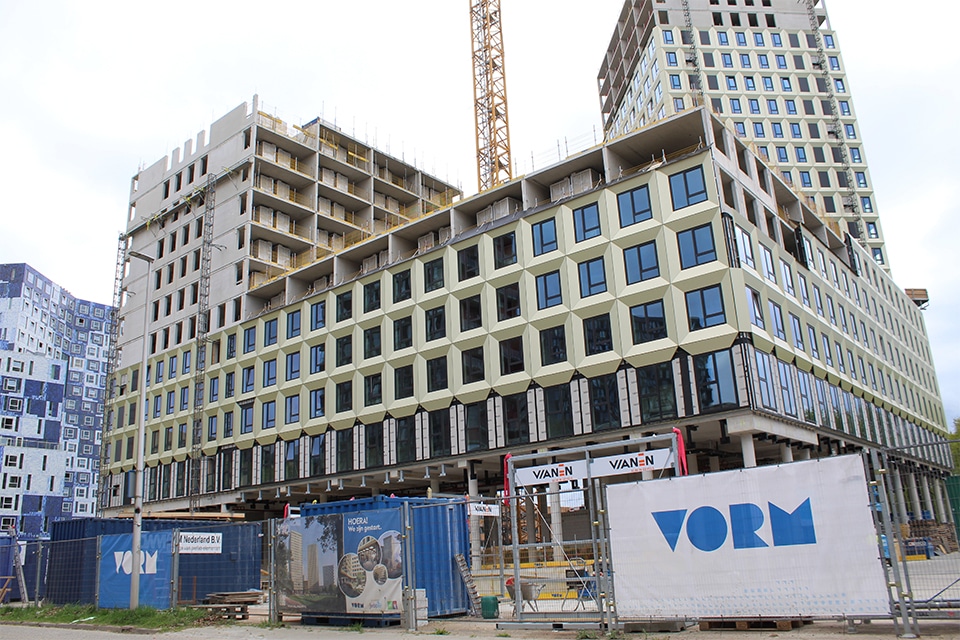
A new basement: rough concrete construction and fragile monuments
Structural concrete construction: indispensable for safe buildings. Especially in vulnerable monuments, such as the monumental hospital where the new University Library of the UvA will be located. "That interface between hardcore civil engineering and building on a historic environment is fantastic," says Paul Beljaars, senior project manager at Van Hattum en Blankevoort.
Especially in the middle of the inner city where space is scarce, Van Hattum and Blankevoort specialists enjoy working. "Complex environments and fragile monuments that you have to preserve, that's beautiful work. In the case of the UvA, we limited ourselves to the foundation and auxiliary work and the concrete structure, but often we also tackle the entire multidisciplinary
package on it."

Into the ground
Beljaars and his team completed the basement under the landmark hospital. "The building stood on wooden piles and originally had no basement. Just a first floor on the well-known Amsterdam uplift layer, or: just 'dirt'. That's why we started with foundation piles. On top of those new piles, we installed an auger construction through the walls, lifting the building, so to speak. You could see the building floating if you lay on your stomach on the ground."
That floating foundation allowed for excavation under the existing building. "We made a new ground floor, dug out the soil under the building and made the basement floor and walls. Finally, we reattached the building to the basement." A great project, according to Beljaars, because all facets in terms of design, construction, structural safety and organization came together here.
Attention to all
So the biggest challenge was the continuous monitoring in the project. "We had to make it clear to everyone, from the structural engineers to the earthworkers, that all the phases in the project were very meticulous. We couldn't go to the next step until the current one was finished. Because if you skip a step, it could disrupt the stability of the monument. You don't want that."
Beljaars is immensely proud of how seriously all the workers took safety on the project. "The work was stopped several times because someone came across a crack or saw a support beam askew. That's exactly what we wanted, for everyone to keep thinking along. Was that beam indeed lying crooked? Then we fixed that immediately before continuing with the rest."
Intensive cooperation
Before the first piles went into the ground, an entire project had already been carried out, Beljaars says. "We adjusted the design of the basement that was already there quite a bit, together with the structural engineer of the UvA. And that was quite spicy at times. But when the basement was delivered, both we and the UvA were extremely satisfied. That is also absolutely thanks to the university and both teams who managed to hold on to each other during the project."



